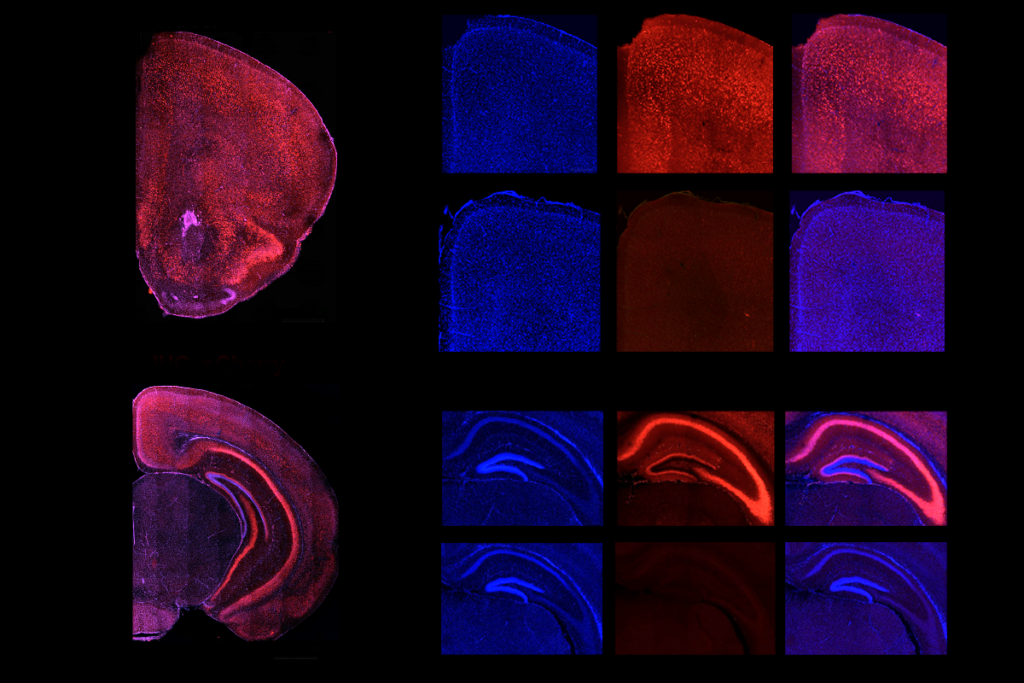
Autism’s drug problem
Many people on the spectrum take multiple medications — which can lead to serious side effects and may not even be effective.
C
onnor was diagnosed with autism early — when he was just 18 months old. His condition was already obvious by then. “He was lining things up, switching lights on and off, on and off,” says his mother, Melissa. He was bright, but he didn’t speak much until age 3, and he was easily frustrated. Once he started school, he couldn’t sit still in class, called out answers without raising his hand and got visibly upset when he couldn’t master a math concept or a handwriting task quickly enough. “One time, he rolled himself up into the carpet like a burrito and wouldn’t come out until I got there,” Melissa recalls. (All families in this story are identified by first name only, to protect their privacy.)Connor was prescribed his first psychiatric drug, methylphenidate (Ritalin), at age 6. That didn’t last long, but when he was 7, his parents tried again. A psychiatrist suggested a low dose of amphetamine and dextroamphetamine (Adderall), a stimulant commonly used to treat attention deficit hyperactivity disorder (ADHD). The drug seemed to improve his time at school: He was able to sit still for longer periods of time and focus on what his teachers were saying. His chicken-scratch handwriting became legible. Then, it became neat. Then perfect. And then it became something Connor began to obsess over.
“We were told that these are the gives and takes; if it’s helping him enough to get through school, you have to decide if it’s worth it,” Melissa says. It was worth it — for a while.
But when the Adderall wore off each day, Connor had a tougher time than ever. He spent afternoons crying and refusing to do much of anything. The stimulant made it difficult for him to fall asleep at night. So after a month or two, his psychiatrist added a second medication — guanfacine (Intuniv), which is commonly prescribed for ADHD, anxiety and hypertension, but can also help with insomnia. The psychiatrist hoped it might both ease Connor’s afternoons and help him sleep.
In some ways, it had the opposite effect. His afternoons did get slightly better, but Connor developed intense mood swings and was so irritable that every evening was a struggle. Rather than simply tossing and turning in bed, he refused to even get under the covers. “He wouldn’t go to bed because he was always angry about something,” Melissa says. “He was getting himself all wound up, carrying on, getting upset at night and crying.”
After seven months, his parents declared the combination unsustainable. They swapped guanfacine for over-the-counter melatonin, which helped Connor fall asleep with no noticeable side effects. But within a year, he had acquired a tolerance for Adderall. Connor’s psychiatrist increased his dosage and that, in turn, triggered tics: Connor began jerking his head and snorting. Finally, at his 9-year physical, his doctor discovered that he’d only grown a few inches since age 7. He also hadn’t gained any weight in two years; he’d dropped from the 50th percentile in weight to the 5th.
That was the end of all the experiments. His parents took him off all prescription drugs, and today, at almost 13 years old, Connor is still medication-free. His tics have mostly disappeared. Although he has trouble maintaining focus in class, his mother says that the risk-benefit ratio of trying another drug doesn’t seem worth it. “Right now we’re able to handle life without it, so we do.”
Connor is just one of the many, many children with autism who are given multiple prescriptions. Phoenix was only 4 when he started taking risperidone (Risperdal), a drug approved for irritability in autism. Now 15, he has taken more than a dozen different medications. Ben, 34, has autism, but for years he was misdiagnosed with other conditions. He was in middle school when his mother insisted he take drugs for his depression and disruptive behaviors. His doctor tried one antidepressant after another; nothing worked. In high school, at 15, he was misdiagnosed again, this time with bipolar disorder, and given an anticonvulsant and an antidepressant.
For Connor, eliminating prescription drugs was difficult, but doable. For others, multiple medications may seem indispensable. It’s not unusual for children with autism to take two, three, even four medications at once. Many adults with the condition do so, too. Data are scant in both populations, but what little information there is suggests multiple prescriptions are even more common among adults with autism than in children. Clinicians are particularly concerned about children with the condition because psychiatric medications can have long-lasting effects on their developing brains, and yet are rarely tested in children.
In general, polypharmacy — most often defined as taking more than one prescription medication at once — is commonplace in people with autism. In one study of more than 33,000 people under age 21 with the condition, at least 35 percent had taken two psychotropic medications simultaneously; 15 percent had taken three.

“Psychotropic medications are used pretty extensively in people with autism because there aren’t a lot of treatments available,” says Lisa Croen, director of the Autism Research Program at Kaiser Permanente in Oakland, California. “Is heavy drug use bad? That’s the question. We don’t know; it hasn’t been studied.”
Sometimes, as in Connor’s case, a second drug is prescribed to treat the side effects of the first. More often, doctors prescribe drugs for each individual symptom — stimulants for focus, selective serotonin reuptake inhibitors (SSRIs) for depression, antipsychotics for aggression and so on. (Children with autism who have epilepsy also typically take anticonvulsants. But because those drugs are effective and easy to assess, they’re usually not seen as part of the polypharmacy problem.)
“Kids come in on Zoloft, Depakote and risperidone,” says Matthew Siegel, assistant professor of psychiatry and pediatrics at Tufts University in Medford, Massachusetts. “Zoloft is an antidepressant, Depakote is a mood stabilizer, and risperidone is an antipsychotic — three psychotropic medications that are being prescribed for one individual.”
Other times, due to moves or changes in coverage or just a lack of rapport, people on the spectrum end up seeing multiple doctors, all of whom have their own ideas about treatment and may add a new drug without removing another.
The reason for this confusion: No existing medication treats the underlying condition.
The core characteristics of autism include repetitive behaviors, difficulty with social interactions and trouble communicating. Therapy can help, but no medication so far can improve these problems. Instead, drugs merely treat some of the peripheral features — ADHD, irritability, anxiety, aggression, self-injury — that make life challenging for people with autism.
This practice that can put people on a drug cocktail that may not be effective or appropriate. Each clinician must make her own best guess about what works and is safe, because there’s simply not yet enough research. “We have so few studies that have looked at single drugs, and so few studies that have even directly compared single drugs,” says Bryan King, vice chair of child and adolescent psychiatry at the University of California, San Francisco. “There’s such a long path to go down before we get to a point where we see these specific combinations studied.”
”“Is heavy drug use bad? That’s the question. We don’t know; it hasn’t been studied.” Lisa Croen
The straight dope:
T
he U.S. Food and Drug Administration has approved only two drugs for children and adolescents with autism: risperidone and aripiprazole (Abilify), both atypical antipsychotics prescribed for behaviors associated with irritability, such as aggression, tantrums and self-harm. The drugs help ease these behaviors about 30 to 50 percent of the time, but leave others untouched. And that’s a major gap: Psychiatric problems are common in children with autism. According to a 2010 study, more than 80 percent of children with autism at a psychiatric healthcare center also had ADHD, 61 percent had at least two anxiety disorders, and 56 percent had major depression.Multiple diagnoses lead to drug cocktails, but no clinical trials have tested combinations of the most commonly used medications, so potential drug-drug interactions are unknown. “Every drug has side effects, and when you start to mix them together you’re looking at something that’s not been studied,” King says. “And in autism, where you might have communication impairments, it’s even more worrisome because people are less likely to be able to tell you that your medicines are making them feel sick.”
Beyond that, say researchers, is the fact that the medicines may not even work.
“Many studies have looked at the use of ADHD meds to treat ADHD symptoms in people with autism. The same can be said for obsessive-compulsive disorder and repetitive behaviors,” says Daniel Coury, a developmental pediatrician at Nationwide Children’s Hospital in Columbus, Ohio. “And with virtually all of these, we find that they don’t work as well as they do in people who don’t have autism.”
That research, too, is relatively sparse and is composed mostly of uncontrolled studies. One 2013 meta-analysis concluded that most studies of psychiatric drugs for autism features are either too small or don’t have the right design to determine whether the drugs are effective. The research that does exist, the researchers wrote in that study, “is only suggestive, and awaits true assessment in properly controlled studies.”
Symptoms of depression, obsessive-compulsive disorder, ADHD and other conditions in people with autism seem similar to those that people without autism may experience. But because the underlying cause is different, the biochemistry may be different overall — and also highly variable from person to person.
“That is a big problem for any treatment in autism,” Siegel says. With so many genetic variations underlying autism, each individual’s situation is different, so any treatment needs to be tailored to that individual. Depending on the drug, as little as 20 percent of people may benefit from a drug, even within the ideal conditions of a clinical study. In this milieu, aripiprazole and risperidone stand out because they work up to 50 percent of the time; “50 percent is like a homerun,” Siegel says.
Paradoxically, another reason children and adults with autism may take multiple drugs is because — as in Connor’s case — doctors prescribe a second medication to mitigate side effects from the first. Antipsychotics, for instance, can cause weight gain and metabolic problems, or even involuntary twitching. Some doctors add metformin to address the weight gain, or benztropine (Cogentin) to ease the jerky movements.
But each additional prescription comes with its own potential side effects. Metformin can cause muscle pain and, less commonly, anxiety and nervousness; benztropine can lead to confusion and memory problems. Doctors less experienced in treating autism might misinterpret these drug effects as new symptoms, and be tempted to medicate them in turn. The great majority of psychotropics are prescribed by primary care doctors who have little or no experience with autism, says Siegel. “If people don’t know what they’re doing, you might imagine that kids are more likely to end up on multiple medications.”
Poison pills:
A
s a pre-teen, Ben had many struggles typical of a child with autism: social anxiety, difficulty fitting in with his peers, mild depression, fits of intense anger, and a tendency to be both inattentive and disruptive in class. When he was 12, a school assessment found that he had sensory processing issues and dysgraphia — difficulty with handwriting — but not autism. At his mother’s request, his doctor tried an antidepressant. It didn’t help. It did, however, give him headaches. So did the next antidepressant, and the one after that. The side effects weren’t worth it, so Ben got a reprieve, at least for a little while.Two years later, when he was 16 and having a particularly difficult time in school and at home, his mother insisted he try medication again. Their new family doctor prescribed an antidepressant that had just been introduced, an SSRI called citalopram (Celexa), with instructions that Ben and his mother follow up with a specialist. But life that year was too chaotic for a follow-up, and Ben stayed on citalopram.
Over the next year, school got progressively worse. Ben was increasingly bullied by his peers and increasingly more likely to respond with aggression, so his mother finally took him to a therapist. The therapist diagnosed Ben with bipolar disorder and sent him to a psychiatrist with directions to add valproic acid (Depakote) to the medication mix. Ben recalls that the psychiatrist asked a few questions, then simply handed him a scrip for the two drugs the therapist had requested. Ben’s autism remained unrecognized.
“That’s when things changed pretty dramatically,” Ben says. He gained 50 pounds. He couldn’t focus during class. He got in shouting matches at school and at home, and his anxiety spiked. “My behavior got much more aggressive and erratic,” he says. He’d wake up, terrified, in the middle of the night and just pace in circles around the room. “I don’t think it would have escalated as much as it did if I hadn’t been medicated,” he says. He got into wrestling matches with his father. “I’d be broken down and sobbing and desperate, and punch a hole in the wall.”
Five medications and five clinicians later, Ben was still lethargic, irritable, angry and having a difficult time focusing.
Nailing down the right drug combination is particularly difficult when there’s little to no continuity of care. In Ben’s case, not only was he misdiagnosed, but his family moved twice. On top of that, his therapist and prescribing psychiatrist weren’t communicating about his diagnosis and treatment. In other cases, people may not have access to doctors with expertise in autism. Some people switch doctors in the hopes of finding one with an approach they like, or when their insurance coverage changes. They may see one physician who provides a 30-day prescription along with instructions to find a clinician to manage their care. But they may then move on to another doctor who provides a different drug with similar instructions. The medications add up “because there is no centralized person,” says Shafali Jeste, a pediatric neurologist at the University of California, Los Angeles. “I see it in Los Angeles all the time.”
Prescription numbers can balloon as children pass through adolescence and into adulthood.
“People get on the medications and tend to stay on [them] for long periods of time without ever really attempting to determine whether it’s still needed,” says David Posey, a psychiatrist in Indianapolis, Indiana. The standard recommendation is to reassess drugs yearly, to evaluate whether a lower dose might work — but that can be difficult to do, he says. “Families are reluctant to take away a medication that’s been really helpful.”
Jeste says that people often arrive in her clinic with a long list of medications. But with no electronic health records or a complete medical history, she and her colleagues are left trying to guess why each medication was prescribed, what it was originally intended to do, and whether it’s helping. Then, working one drug at a time, they gradually lower the dosages.
Ben wasn’t lucky enough to find that kind of clinician. By his final year of high school, he was falling asleep in class and felt so debilitated that he dropped out. “At the same time, my parents are getting divorced,” Ben says, recalling that period. “There’s all this chaos happening, and I lose all my supports, I lose all my routine, and I start living out of my car.”
He began smoking marijuana, which he says provided him with an amped-up effect in combination with the SSRI. But in some ways it also helped him function. “It was more effective than the medications at helping me be more social,” he says. Ben says marijuana helped him finally recognize the rise-and-fall pattern of drugs’ effects, and that his psychiatric medications were affecting his moods similarly, albeit more slowly. “I got the idea that maybe some of the cycles I was feeling on a regular basis coincided with the way I was taking my prescribed medications,” he says.
At 21, he decided to wean himself off all drugs, both prescription and recreational. Later that year, he was diagnosed with autism. Now, when he feels the anger rise in him, he says, he steps back and breathes. No more holes in the wall. He runs six days a week, which helps him feel calm, focused and clear-headed. His autism may have prompted his initial moodiness and aggression, but he says it was the medications that sent him into a tailspin.
”“This is an experiment that’s going on, but it’s a completely uncontrolled experiment.” Lawrence Scahill
The remedy:
T
aking multiple prescriptions isn’t always a bad thing. For children whose lives are severely disrupted, or who pose a danger to themselves or others, they may be the only solution.Phoenix was one of those children. “He was a little tornado,” his mother says. One day in early 2007, his daycare called his mother to pick him up early because he was being disruptive, knocking over chairs and tables for no discernable reason. He ran away twice that afternoon — once letting himself out of the car on the way home, and later climbing out his bedroom window. A police patrol found him on the median strip of a busy four-lane thoroughfare, where he had crossed two lanes of traffic. He was just 4.
Phoenix’s mother Sally says he was a complicated little guy from the start. When his moods swung toward anger, he would lash out and try to hurt his older brother, who also has autism. “He had ungodly strength,” she says. In order to keep both boys safe, she knew she had to help him get his anger under control.
His doctor tried him on risperidone, then soon added added guanfacine and Adderall. But his aggression was still out of control. Sally says that every morning when she and her husband woke up, they would look at each other and say, “I wonder what mood Phoenix is going to be in?” And then, she says, “I’d get a knot in my stomach.” It was clear that his medications needed adjusting, but dealing with that at home was more than his family could take. They admitted Phoenix to a hospital for the first time when he was 6.
By 2009, his doctor’s office had already switched psychiatrists twice. The new psychiatrist swapped Adderall out for lisdexamfetamine (Vyvanse). Then, when a blood test showed Phoenix was at an elevated risk for developing breasts — a serious but rare side effect of risperidone known as gynecomastia — the psychiatrist switched risperidone for quetiapine (Seroquel). “It was a disaster,” Sally says. Phoenix climbed out of bedroom windows, repeatedly stood up and walked out of his classroom, and attacked his brother unprovoked. None of the combinations eased his aggression or violent mood swings. One day, when he was 7, Phoenix threatened to kill his brother and his brother’s friend because they wouldn’t play with him. He threw a brick at them and chased them with a metal pipe.
The incident shook his family, and ended with another hospital admittance and new combinations of medications. His doctors replaced quetiapine with another antipsychotic, ziprasidone (Geodon), and kept him on valproic acid and guanfacine. Because Phoenix’s brother, Mac, had been having success with the ADHD medication atomoxetine (Strattera), the hospital staff replaced lisdexamfetamine with atomoxetine.
Phoenix has been in and out of four different residential programs since then, has been hospitalized six times, and has tried a dozen or more medications, as many as four at a time. The hospitalizations helped him wean off some medications and onto others that, at least temporarily, appeared to control his mood swings. But every time he left, the medication combinations slowly lost their potency, and he reverted to aggressive acts, mostly against his brother. The first two residential programs were even less helpful. They created stability and structure: every day the same, every routine consistent and reliable. But the programs weren’t able to adjust his prescriptions as a hospital could. And when he came home, without the rigid routine of a live-in facility, he eventually started attacking his brother. “I have holes in the bedroom doors from Phoenix trying to get to Mac,” Sally says.
The second two programs were tailored to children with autism, and there Phoenix found the help he so badly needed. He was 12 when he started the third program and began taking a new antipsychotic most often prescribed for bipolar disorder, called olanzapine (Zyprexa). And it was during the fourth residential program, when he was 13, that his doctors hit on what seemed to be a winning combination: olanzapine, valproic acid, guanfacine and atomoxetine. He was spending his weekends at home, but during the week he lived at a nearby residential facility where he could get the behavioral and community support he needed. “It was the first time he came home that, for a little bit of time, we really enjoyed his company; we’d get glimpses of the real Phoenix in there,” Sally says.
But a common side effect of Zyprexa is weight gain; the drug made Phoenix ravenous. “On weekends when he was home, he could empty out my freezer at 3 in the morning,” she says. Over the course of a year, the previously skinny child gained nearly 100 pounds. “He looked like he’d pop if you stuck a pin in him,” says his mother. “He’d just be sitting there and his breathing would be labored. We had to get him off the Zyprexa.” His doctor weaned him off Zyprexa and on to one antipsychotic that didn’t work, and then another, quetiapine (Seroquel), that did.

Today Phoenix, 15, is on a four-drug cocktail and has remained stable for more than a year. His mood has remained stable, too. “The aggression is gone,” Sally says. His sense of humor has emerged, and he can sit still and watch a television program with his family or discuss something he sees on the news. He has also developed a sense of empathy. Now, when a child at his school acts up in a way that he might have done in the past, he tells his brother, “‘I owe you and Mom an apology,’” Sally says. “He’s seen it through other people’s eyes, and it’s been a real eye-opener for him.” For the most part, she says, he’s happy. “Out of the clear-blue sky, he’ll be in the kitchen and say, ‘You know, Mom, I love you.’ He’d never said that in his life.”
When new symptoms pop up, the temptation to switch medications can be hard to resist, especially because a complex prescription history can condition families to look to drugs first. But sometimes the solution is far simpler.
This past fall, Phoenix began falling asleep in class in the middle of the day. One of his earlier medications had had a similar effect — making him so drowsy he once fell asleep in the middle of lunch at a busy restaurant — so Sally was concerned. Was he falling asleep because he was crashing as a stimulant wore off? Or because a medication was suddenly causing a new side effect? The last thing she wanted to do was to tweak his finely tuned regimen.
Before taking him in for an assessment, she did a bit of sleuthing. “I bought a Disney Circle,” she says. “Best $100 I ever spent in my life.” The device monitors, and sets limits on, their home Wi-Fi network. It revealed that Phoenix had been getting up in the middle of the night and playing with electronics for hours. She set it to restrict overnight internet access — and suddenly Phoenix was staying awake through school again.
“It’s not uncommon for kids to be on more than one medication. The question is: Is it people fumbling around to try a little of this and a little of that and see if it works — or is it rational?” asks Lawrence Scahill, director of clinical trials at the Marcus Autism Center of Emory University in Atlanta, Georgia. When medication decisions are made judiciously and each one has a clear target, drug combinations can have a clear benefit. Under those circumstances, Scahill says, “I would say that there is such a thing as rational polypharmacy.”
Phoenix’s path, as winding as it has been, has brought him to a good place. He is an example of how polypharmacy, when attempted with attention, care and persistence, can provide people with autism the opportunity to thrive.
But finding and maintaining the right treatment regimen is still up to each physician, each family, each individual. “This is an experiment that’s going on, but it’s a completely uncontrolled experiment,” Scahill says. Ben, Phoenix, Connor: Each of them confronted different challenges and had to figure his own way through, because prescribing is still very much an art, not a science. Clear rules will be a long time coming, if they arrive at all.
Syndication
This article was republished in Scientific American.
Recommended reading

Constellation of studies charts brain development, offers ‘dramatic revision’

Functional connectivity links with autism, not ADHD; and more

Ramping up cortical activity in early life sparks autism-like behaviors in mice
Explore more from The Transmitter

‘How to Change a Memory: One Neuroscientist’s Quest to Alter the Past,’ an excerpt
